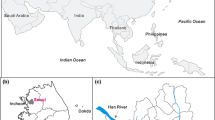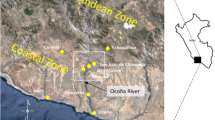Abstract
Urban encroachment into areas historically reserved for oil and gas field operations is an ever-present problem within the Los Angeles Basin. The recent frenzy in real estate development has only intensified what can be characterized as a conflict in land usage. Subsurface mineral rights are severed from surface ownership, often resulting in developments being approved without adequate consideration of the underlying oil and gas field consequences. Also, surface operations are frequently co-located within residential areas without consideration of the health and safety consequences of emissions of toxics to air. This paper presents a review of the environmental, health and safety hazards posed by urban oilfield operations, with an emphasis upon the lessons learned from the “L.A. Basin: Original Urban Oilfield Legend” (see Castle and Yerkes 1976; Denton and others 2001; Endres and others 2002; Kouznetsov and others 1994; Katz and others 1994; Schumacher and Abrams 1994; and Schoell 1983). The Los Angeles Basin has provided the authors with one of the largest natural laboratories in the world for studying the consequences of these issues. The results presented are part of a long-term research program based upon the application of geoscience and petroleum engineering principles in obtaining a fundamental understanding of the root causes of the environmental hazards posed. Topics addressed include: (1) vertical migration of gas to the surface along faults and improperly completed or abandoned wellbores (e.g., due to poor cementing practices), (2) subsidence caused by the fluid production and declining reservoir pressures, (3) soil and groundwater contamination resulting from historic oil and gas field operations, and (4) air toxics resulting from surface operations. A number of case histories are discussed that illustrate the seriousness of the problem. A clear case is made for the urgent need for closer coordination and education by the petroleum industry of the local government planning departments. These departments have the principal role in determining land use policies, acting as the lead agency in performing environmental site assessments (e.g., under the California Environmental Quality Act), and in establishing mitigation measures for dealing with the long-term environmental hazards. This paper establishes prudent practices on the part of oilfield operators for the monitoring and mitigation of these hazards.












Similar content being viewed by others
References
Allison ML (2001) The Hutchinson gas explosions: unraveling a geologic mystery. Kansas Bar Association, 26th Annual KBA/KIOGA Oil and Gas Law Conference vi: 3–1 to 3–29
California Department of Water Resources, Baldwin Hills Reservoir, April 1964
California Division of Oil and Gas (1991) California Oil and Gas Fields, Vol.2 California Div. Oil and Gas Publ. No. TR 12, Sacramento, CA
Castle RO, Yerkes RF (1976) Recent surface movements in the Baldwin Hills, Los Angeles County, California—a study of surface deformation associated with oil field operations: US Geol Surv Prof Pap 882, 125 pp
Chilingar GV, Khilyuk LF, Katz SA (1996) Pronounced changes in upward natural gas migration as precursors of major seismic events. J Petrol Sci Eng 14:133–136
Chilingarian GV, Donaldson EC, Yen TF (1995) Subsidence due to fluid withdrawal. Dev Petrol Sci 41, Elsevier, Amsterdam, 498 pp
Cobarrubias JW (1985) Task force report on the March 24, 1985 methane gas explosion and fire in the Fairfax area, City of Los Angeles, Department of Building and Safety, 58 pp
Craig BD (1993) Sour-gas design considerations. Soc Petrol Eng, Inc., Monogr vol. 15
Denton JE et al. (2001) Prioritization of toxic air contaminants under the Children’s Environmental Health Protection Act, California Environmental Protection Agency Final Report
Endres B (1999) An evaluation of the oil and gas migration hazards existing at the Belmont Learning Center Complex, Belmont Blue Ribbon Commission Hearings, October 1999
Endres B (2002) Why the Belmont Learning Center requires the preparation of a subsequent environmental impact report (EIR), Los Angeles Unified School District School Board Hearing, August 15, 2002
Endres B, Chilingarian GV, Pokinwong P (2002) Environmental hazards and mitigation measures for oil and gas field operations located in urban settings. Can Int Petrol Conf, Calgary, Alberta, Canada, June 13, 2002
Endres BL, Chilingarian GV, Yen TF (1991) Environmental hazards of urban oilfield operations. J Petrol Sci Eng 6:95–106
Gurevich AE, Chilingarian GV (1993) Subsidence over producing oil and gas fields, and gas leakage to the surface. J Petrol Sci Eng 9(3):239–250
Gurevich AE, Endres BL, Robertson JO, Chilingarian GV (1993) Gas migration from oil and gas fields and associated hazards. J Petrol Sci Eng 9:223–228
Hamilton DH, Meehan RL (1971) Ground rupture in the Baldwin Hills. Science 172:333–344
Hunt JM (1979) Petroleum geochemistry and geology. San Francisco, W. H. Freeman and Company
Jenden PD (1985) Analysis of gases in the Earth’s crust, Final Report to the Gas Research Institute for the period 1 January 1982–28 February 1985, Contract No. 5081–360–0533, 110 pp
Katz SA, Khilyuk LF, Chilingarian GV (1994) Interrelationships among subsidence owing to fluid withdrawal, gas migration to the surface and seismic activity. Environmental aspects of oil production in seismically active areas. J Petrol Sci Eng 11:103–112
Khilyuk LF, Chilingar GV, Endres BL, Robertson JO (2000) Gas Migration; events preceding earthquakes. Butterworth-Heinemann, Woburn, Massachusetts, 389 pp
Kilburn KH (1998) Chemical brain injury. Van Nostrand Reinhold, New York, 416 pp
Kilburn KH (1999) Evaluating health effects from exposure to hydrogen sulfide: central nervous system dysfunction. Environ Epidemiol Toxicol 1:207–216
Kouznetsou OL, Sidorov VI, Katz S, Chilingar GV (1994) Interrelationship among seismic and short-term tectonic activity, oil and gas production, and gas migration to the surface. J Petrol Sci Eng 13:57–63
Marlow RS (1989) Cement bonding characteristics in gas wells. J Petrol Technol, November: 1146–1153
McMillen SJ, Magaw RI, Carovillano RI (2001) Risk-based decision-making for assessing petroleum impacts at exploration and production sites. Petroleum Environmental Research Forum and the United States Department of Energy
Ramos G, Thackrey T (1985) Los Angeles Times article
Riegle JR (1953) Gas storage in the Playa del Rey oil field. In: Summary of operations, California Oil Fields. State of California Division of Oil and Gas, San Francisco, CA 39(2):17–33
Rixey WG (2001) An evaluation of benzene risk. In: McMillen SJ, Magaw RJ, Carovillano RL (eds) Risk-based decision-making for assessing petroleum impacts at exploration and production sites.Petroleum Environmental Research Forum and the United States Department of Energy, pp 156–173
Schoell M (1983) Genetic characterization of natural gases. AAPG Bull 67:2225–2238
Schoell M, Jenden PD, Beeunas MA, Coleman DD (1993) Isotope analysis of gases in gas field and gas storage operations. SPE No. 26171, SPE Gas Technol. Symp., Calgary, Alberta, Canada, June 28–30, pp 337–344
Schumacher D, Abrams MA (eds) (1994) Hydrocarbon migration and its near-surface expression. AAPG Mem 66, 360 pp
Tek MR (1987) Underground storage of natural gas. Contributions in petroleum geology and engineering, no. 3, GV Chilingar (ed), Gulf Publishing Co., Houston, TX, 389 pp
Tissot BP, Welte DH (1978) Petroleum formation and occurrence. Springer, Berlin Heidelberg New York
Toth J (1996) Thoughts of a hydrogeologist on vertical migration and near-surface geochemical exploration for petroleum. AAPG Mem 66:279–283
Watters LT, Sabinas FL (1980) Field evaluation of method to control gas flow following cementing. SPE paper 9287 presented at the 1980 SPE Annual Technical Conference, Dallas, September 21–24
Wentworth CM, Ziony JI, Buchanan JM (1969) Preliminary geologic environmental map of the greater Los Angeles Area, California
Author information
Authors and Affiliations
Corresponding author
Rights and permissions
About this article
Cite this article
Chilingar, G.V., Endres, B. Environmental hazards posed by the Los Angeles Basin urban oilfields: an historical perspective of lessons learned. Env Geol 47, 302–317 (2005). https://doi.org/10.1007/s00254-004-1159-0
Received:
Accepted:
Published:
Issue Date:
DOI: https://doi.org/10.1007/s00254-004-1159-0




